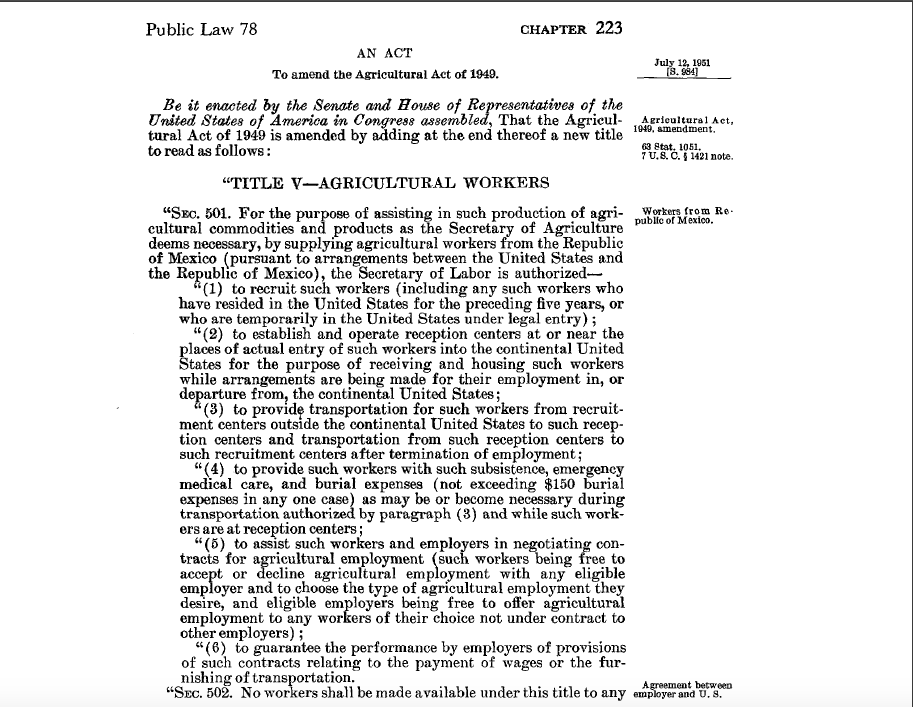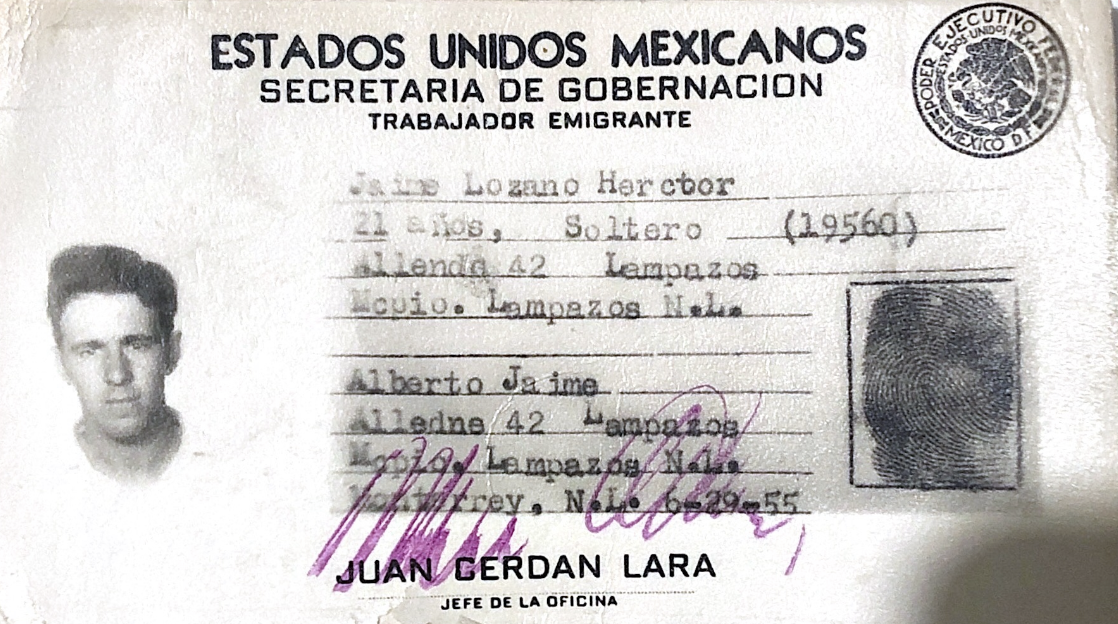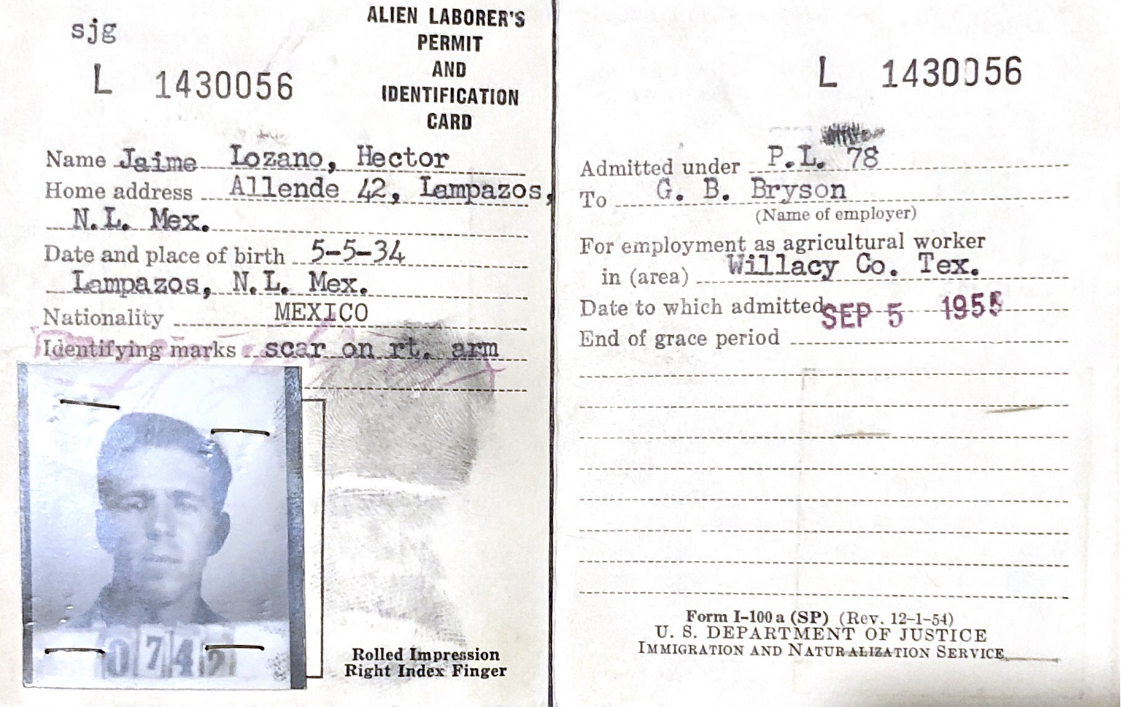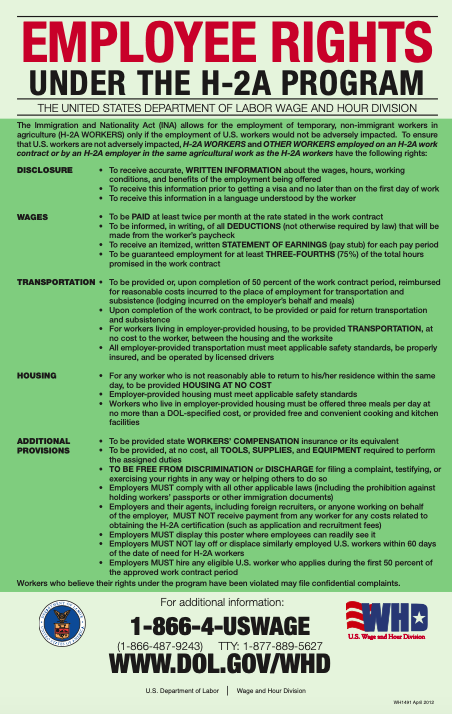Guest Worker Programs and Labor Laws
Guest Worker Programs
During World War I, there were approximately 27,000 Mexican workers hired to work U.S. fields while men were away at war. Over time, the number of these guest workers increased and after the war was over, many stayed as farmworkers. However, during the Great Depression, the need for American jobs increased leaving Mexican workers unemployed. There was a Mexican Repatriation that forced many Mexicans and even Mexican-Americans to leave and go back to Mexico, leaving families who had a home in the U.S. virtually homeless in a now foreign land.
Additionally, during World War II, there was a labor shortage in the U.S. which, once again, allowed Mexican farmworkers to come to the U.S. Due to the outcome of the first program, the second one was an official agreement that was signed 1942 as the Mexican Farm Labor Agreement. This called for better living and wage conditions, albeit slightly better conditions, for the workers. Intended to last only a few years, with the extension of Public Law 78, The Bracero Program lasted 22 years.
In 1953, the H-2 program was created and later divided into H-2A and H-2B in 1986. H-2B extends to non-immigrants working in anything while H-2A is limited to agricultural labor. Under Section 218 of the Immigration and Nationality Act, the H-2A allows employees to employ workers from other countries after they have failed to contract U.S. workers. This temporary admission to the U.S. is limited to 10 months and can be renewed consecutively for 3 years. Once those 3 years are over, the worker must remain outside of the U.S. for 3 months before being able to reapply. Workers under this program are guaranteed a minimum of 75% of the hours promised, a minimum wage, free housing, and transportation.

Public Law 78 signed by President Truman in 1951
The First and Second Bracero
Although there was no formal documentation, the “first bracero” program began in 1917 and ended in 1921 however, only half of the farmworkers returned to Mexico. Due to the high levels of unemployment, as a result of the Great Depression, the repatriation of Mexican workers occurred, including those who were U.S. citizens. Due to a labor shortage in the U.S. during World War II, the U.S. signed the Mexican Farm Labor Agreement with Mexico in 1942. It was extended in 1951 by congress under Public Law 78 until its termination in 1964.

Immigrant Worker Identification

Bracero Identification Card and Permit
The H2A Guest-Worker Program
Created in 2008, this program allows employers to hire workers from other countries for 10 months or less under Section 218 of the Immigration and Nationality Act. It guarantees the worker rights, better wages, and housing than that provided during the bracero programs.
Labor Laws
In order to combat the effects of the Great Depression, FDR signed into effect the National Industrial Relations Act (NIRA) in 1933. Meant to self-regulate industries, establish fixed prices and wages and establish codes of fair competition, this act under Section 7a, allowed for union formation and participation. However, in May 1935, it was deemed unconstitutional by the Supreme Court in Schechter Poultry Corp. v. United States. As a result, in 1935 Senator Wagner proposed a new law, the Wagner Act, officially known as the National Labor Relations Act, which was passed and signed by FDR. This law established the National Labor Relations Board which enforces their rulings, conducts investigations, endorses representation and the rights of employees. Additionally, under section 7, it also allows for the formation of labor unions and guarantees them equal rights and protection.
Due to the rise of Labor unions like the formation of the UFW in 1962, organizations like these have bettered conditions for works by fighting for equal protection, anti-discriminatory and fair pay laws. One of these laws is the Fair Labor Standard Acts (FSPA). This requires employees to meet workers' needs at the local, state and federal levels. This establishes that workers must be paid the minimum wage, have an opportunity for overtime and restricts child labor. However, farmworkers were fully excluded from this law until 1966. Although they are now included, unfortunately, farmworkers are not allowed overtime and the wage set at a minimum level does not apply to those who work on small farms.
Another law is the Migrant and Seasonal Agricultural Worker Protection Act (MSPA) enacted in 1983. This requires that employers establish contracts and disclosures to farmworkers which both parties are required to abide by. It endorsed the minimum wage policy and prohibits employers from forcing workers to buy supplies from them. Employers must also meet federal and state-level requirements when providing required housing and transportation needs. It also established certain employee rights such as the right to complain and file lawsuits without any consequences such as threats, discharge, and discrimination.
